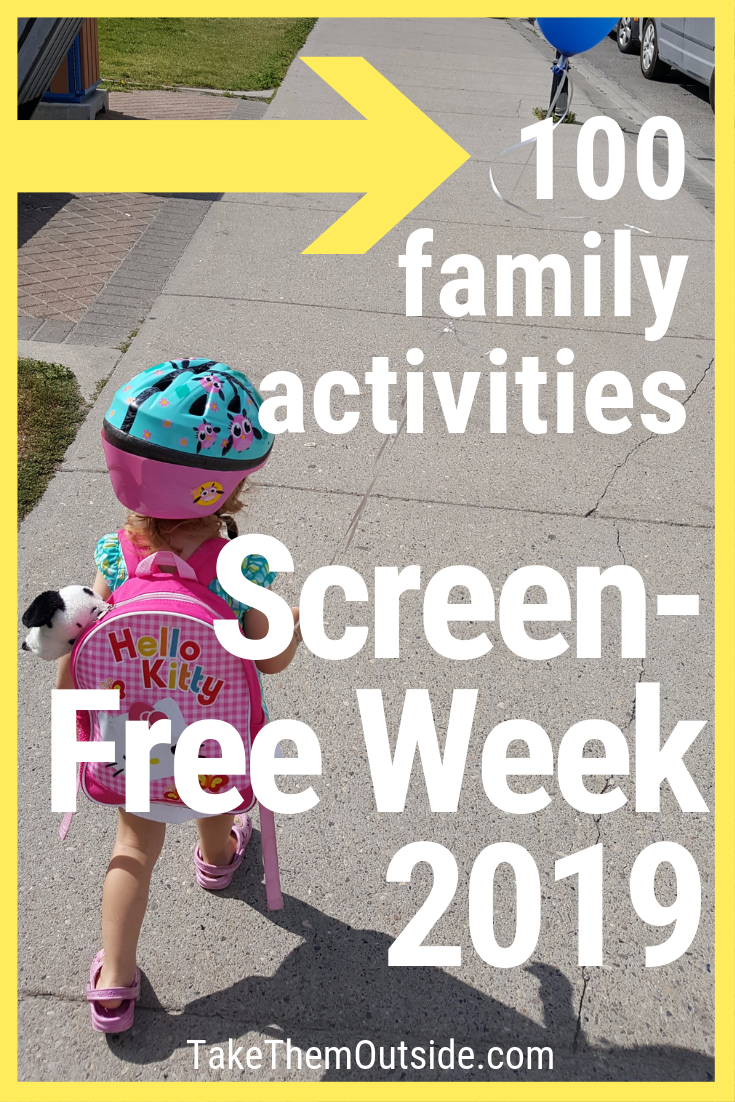Your Guide To A Successful Screen-Free Week For Kids

Table of Contents
Planning Your Screen-Free Week: Setting the Stage for Success
A successful screen-free week for kids doesn't just happen; it requires careful planning and family involvement. Effective screen-free week planning ensures a smoother transition and increases the likelihood of success. Think of it as a mini-digital detox for the whole family!
Setting Realistic Goals & Expectations
Don't jump into a full week of no screens without preparation. Starting small is key. Consider beginning with a few hours of screen-free time each day, or perhaps dedicate one day a week to screen-free activities before tackling a full seven days. Involving your children in the planning process is crucial. Let them help decide on alternative activities; this fosters buy-in and reduces resistance.
- Set clear rules and consequences for breaking the rules. Consistency is vital.
- Communicate expectations clearly to all family members. Ensure everyone understands the rules and the duration of the screen-free period.
- Prepare alternative activities to keep kids engaged. Having a plan B (and C!) for downtime will prevent boredom and frustration.
Creating a Screen-Free Environment
Minimizing access to screens is paramount for a successful screen-free week. This means more than just turning off devices; it's about creating a screen-free environment.
- Put away devices during meals and family time. Encourage face-to-face interaction and conversation.
- Charge devices outside of bedrooms. This helps establish healthy sleep habits and reduces nighttime screen use.
- Establish clear boundaries and stick to them. Consistency is crucial in managing expectations and minimizing conflict. Consider password protecting devices or storing them in a designated area out of sight. Creating designated "screen-free zones," like the dining room or bedrooms, can also be helpful.
Engaging Alternatives to Screen Time: Fun Activities for Kids
The key to a successful screen-free week lies in providing engaging and enjoyable alternatives. This is your opportunity to rediscover the joy of simple pleasures and foster creativity.
Indoor Activities
Indoor activities offer a wealth of opportunities for fun and learning, even on a rainy day.
- Organize a family game night. Board games, card games, and puzzles are fantastic ways to bond and encourage family interaction.
- Have a creative writing session. Spark imaginations by writing stories, poems, or even play scripts.
- Start a family scrapbook or photo album. This is a great way to preserve memories and engage in meaningful conversations.
- Engage in arts and crafts projects. Get creative with painting, drawing, sculpting, or making homemade cards.
- Build a fort! This is a classic indoor activity that sparks creativity and imagination.
Outdoor Activities
Outdoor play offers incredible benefits for both physical and mental well-being.
- Go on a nature walk. Explore local parks, trails, or even your own backyard.
- Visit a local park or playground. Let kids run, jump, and socialize with other children.
- Have a picnic in the backyard. Enjoy a meal outdoors, surrounded by nature.
- Engage in active games such as tag, hide-and-seek, or kickball.
- Ride bikes or scooters.
Addressing Challenges & Troubleshooting: Overcoming Obstacles
Even the best-laid plans can encounter challenges. Anticipating potential problems and having strategies in place will make your screen-free week much smoother.
Handling Withdrawal Symptoms
Some children might experience withdrawal symptoms, such as irritability or mood swings, when deprived of screen time.
- Allow for short breaks with non-screen related activities. These short breaks can help manage withdrawal symptoms.
- Provide emotional support and understanding. Acknowledge their feelings and reassure them that this is a temporary situation.
- Focus on the positive benefits of screen-free time. Highlight the fun activities they are participating in and the positive impact on their well-being.
Dealing with Boredom and Complaining
Boredom is a common challenge, especially initially. Learning to cope with boredom is a valuable life skill.
- Engage in active listening. Hear your children's concerns and validate their feelings.
- Provide positive reinforcement for positive behavior. Acknowledge and praise their efforts to participate in screen-free activities.
- Remain consistent with established boundaries. Sticking to the plan will help children adjust to the new routine.
Conclusion
A successful screen-free week for kids is achievable with careful planning, engaging alternatives, and a proactive approach to challenges. By following the strategies outlined in this guide, you can create a healthier, more connected family dynamic while nurturing your children's creativity, imagination, and overall well-being. Embrace the benefits of a screen-free lifestyle and embark on a journey towards a more fulfilling family experience! Remember to start planning your own successful screen-free week today!

Featured Posts
-
 Exclusive Vybz Kartel On Prison Freedom And His New Music
May 21, 2025
Exclusive Vybz Kartel On Prison Freedom And His New Music
May 21, 2025 -
 Abn Amro Analyse Van De Stijgende Occasionmarkt En De Rol Van Autobezit
May 21, 2025
Abn Amro Analyse Van De Stijgende Occasionmarkt En De Rol Van Autobezit
May 21, 2025 -
 Loire Atlantique Un Grand Quiz Sur Son Histoire Sa Gastronomie Et Sa Culture
May 21, 2025
Loire Atlantique Un Grand Quiz Sur Son Histoire Sa Gastronomie Et Sa Culture
May 21, 2025 -
 Half Dome Lands Major Media Account With Abn Group Victoria
May 21, 2025
Half Dome Lands Major Media Account With Abn Group Victoria
May 21, 2025 -
 Trans Australia Run A Potential Record Breaking Attempt
May 21, 2025
Trans Australia Run A Potential Record Breaking Attempt
May 21, 2025
Latest Posts
-
 Blue Origin Cancels Launch Vehicle Subsystem Malfunction
May 21, 2025
Blue Origin Cancels Launch Vehicle Subsystem Malfunction
May 21, 2025 -
 Maybanks 545 Million Economic Zone Investment Boost
May 21, 2025
Maybanks 545 Million Economic Zone Investment Boost
May 21, 2025 -
 Dubai Holding Increases Reit Ipo To 584 Million
May 21, 2025
Dubai Holding Increases Reit Ipo To 584 Million
May 21, 2025 -
 Couple Arrested Following Antiques Roadshow Revelation National Treasure Case
May 21, 2025
Couple Arrested Following Antiques Roadshow Revelation National Treasure Case
May 21, 2025 -
 Jaw Dropping Antiques Roadshow Episode Results In Arrest For National Treasure Trafficking
May 21, 2025
Jaw Dropping Antiques Roadshow Episode Results In Arrest For National Treasure Trafficking
May 21, 2025
